|
PROGRAM SCHEDULE 2002-2003
16th Season
| Sun | Sep | 15 | 2:00 | Sounds Better?




Photographs taken during the open house by a club member. Click on image to make it bigger.
|
In celebration of the re-opening of Roy Thomson Hall
on September 21st one of our club members will
be presenting a program featuring recordings of the items to be presented in
that concert. The RTH program has been chosen as "a showcase for orchestra,
soloists, and the Hall itself" and will demonstrate the acoustics of the
newly-renovated Hall for the first time.
Included in his program will be:
- a festive (and well-known!) Wagnerian overture;
- a Wagnerian aria which has traditionally been associated with opening
celebrations for concert venues (Dich teure Halle … To you, oh beloved
hall!);
- a colourful French orchestral showpiece;
- a solo by Sir Andrew Davis demonstrating the magnificent Gabriel Kney
organ;
- a virtuoso piece for violin and orchestra; and, finally
- an exciting 20th-century choral spectacular to bring the celebration to an
exciting close
Note that CBC Radio Two will record the opening gala and will
broadcast it starting at 7:30 the evening of Sept 24.
|
|
| Sat | Oct | 5 | 4:00 | Michel Dalberto, piano
(Please note the irregular day and time.)


[Click on the image to make it bigger.]
Our programme will feature recorded performances of the pianist who is having a concert
scheduled with Music Toronto, October 15 at 8:00 p.m. at the Jane
Mallett Theatre of the St. Lawrence Centre for
the Arts. He will be playing works by Franck, Fauré,
Debussy, and Liszt. Learn more about this Paris-born pianist at
Michel Dalberto's web-page
|
| Sun | Oct | 27 | 2:00 | Gustav Mahler's Symphony No. 8,
"Symphony of a Thousand"
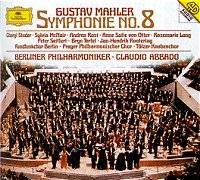
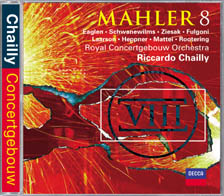
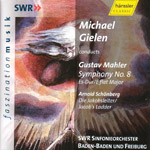
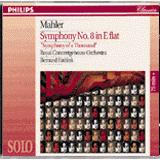
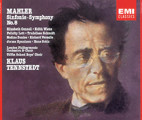
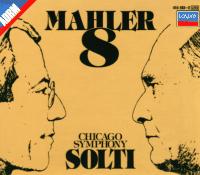
|
90 strings, piccolo, 4 flutes, four oboes, English horn, 5 clarinets, bass clarinet, 4 bassoons, contrabassoon, 8 horns, 8 trumpets, 7 trombones, bass tuba, doubled timpani, bass drum, cymbals, tamtam, triangle, glockenspiel, celesta, organ, piano, harmonium, a quartet each of mandolins and harps, two mixed choirs, 3 sopranos, contralto, mezzo-soprano, tenor, baritone, bass and a 350 voice children's choir.

Triumphantly premiered at Munich´s New Music Festival Hall on September 12, 1910, Mahler himself conducting. The distinguished audience included Richard Strauss, Lilli Lehmann, Bruno Walter, Thomas Mann, Arnold Schoenbberg, Anton von Webern, Siegfried Wagner, Leopold Stokowski, and a gaggle of Royal Highnesses.
"If you are perverse enough to endure over an hour of masochistic aural flagellation, here's your chance. This grandiose Mahler [Symphony No. 8], with all its elephantine forces, fatuous mysticism and screaming hysteria, adds up to a sublimely ridiculous minus-zero."
-- R.D. Darrell (1952)
"With Mahler, the orchestra grew as his metaphysical search became deeper and more intense ... The man who spoke of his symphonies in terms of the ‘universe resounding’ could not deal with such images in terms of a chamber orchestra or string quartet. Only a mammoth orchestra, with its inherent ability to express vastness and eternity, would do. And the more intense the search, the more furious the groping, the greater the need for expression through the vastest possible of orchestral bodies in the desperate need of expressing the inexpressible."
Egon Gartenberg
Unable verbally to describe this symphony's originality, Mahler once proposed, "Just imagine that the universe is beginning to sound and to ring. It is no longer human voices, but circling planets and suns."
|
|
| Sun | Nov | 3 | 2:00 | Centennial Series - 1902 Premieres, Part 3:
Pelléas et Mélisande
 Presentation of DVD recording of Claude Debussy's work, premiered on April 30, 1902 at the Opéra-Comique, Paris France. Presentation of DVD recording of Claude Debussy's work, premiered on April 30, 1902 at the Opéra-Comique, Paris France.
|
| Sat | Dec | 14 | 8:00 | Christmas Party
Please note the corrected date. This is a party for only club members and their invited guests. Members will have received e-mail or a telephone call giving the details. For those members who have been at previoius Christmas parties, you know the general format of the evening.
|
| Sat | Dec | 29 | 2:00 | Nutracker
(Note unusual day.)
Béjart's Nutcracker on DVD.
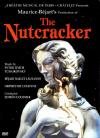
|
Choreographer Maurice Béjart boldly reconstructed The Nutcracker in 1998 for The Châtelet Theatre, Paris. It hardly had the look of a traditional Russian family's Christmas, but was presented as the expression of a retrospective view of his childhood and his life through the art of dance. The cutting edge interpretation produced extremely negative reviews, which can be the proof of the inventive, innovative nature of his work.
|
Not recommended if you consider yourself "CONSERVATIVE," but it will be an intellectually challenging Christmas gift to refresh an old treasure in our stockings. DVD presentation.
 [Nutcracker DVD - additional information]
[Nutcracker DVD - additional information]
[Culture Kiosque article on Bejart's Nutcracker]
|
| Sun | Jan | 26 | 2:00 | Janácek
One of the original voices of twentieth-century music, Janácek's
chamber
music is uniquely autobiographical. From the youthful exuberance of
his wind
sextet to his passionate string quartets, he played out the drama of
his life
in these miniature gems. In a way, we can overhear him as he expresses
his
devotion to Kamila Stösslová, the love of his later life. We can
suffer with
him as he became increasingly isolated due to the public's indifference
to
his operas which would become masterpieces after his death. Featuring
performances by such outstanding artists as The Hagen String Quartet
and The
Lindsay String Quartet, András Schiff, and Leif Ove Andsnes, the
program will
also include some lesser-known musicians performing Janácek's pieces
for wind
ensemble, as well as cello and piano.
[Discography]
|
| Fri | Feb | 14 | 7:00 | Günter Wand
First anniversary of the conductor's death
Note the unusual day.
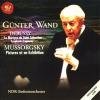

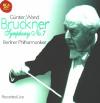

|
German conductor Günter Wand passed away on February 14th, 2002 in his residence at Ulmiz in Switzerland. He was ninety years old and had been active until his death as one of the best interpreters of Bruckner. In his long career he achieved his most significant international success in the latter part of life. His association with his orchestra, The North German Radio Symphony, started in 1982 at the age of seventy. Their mutual respect resulted in numbers of LIVE recordings which used to be widely available from BMG. Wand established a special relationship with The Berlin Philharmonic as well (recordings: Schubert 8 & 9, Bruckner 4, 5, 8 & 9) which began as the conductor turned eighty three.
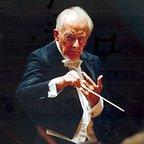
The life of this great conductor seems to be a lesson for everybody: It will never be too late as long as you are alive. But his music-making suggests one condition for success of life. His sincerity to music and patience to himself were extraordinary; Wand's analytic precision with the score assured a sense of high clarity in musical structure. Every single element is polished until it takes on a meaning within the entire system of the piece. Wand displays musically what it means to know what one is doing.
I am not entirely confident in keeping up what I do now until the age of seventy, or do I know exactly what I do now? But for sure I will enjoy for the rest of my life all the recordings left to us by Günter Wand. On the occasion of the first anniversary of his death, I would like to share with you not his famous Bruckner, but rather his Beethoven, Schubert, Brahms, Tchaikovsky and even Debussy.
|
|
| Sun | Feb | 23 | 2:00 | Pianists at Play
This DVD and Laser Disc presentation will, it is hoped, assist those club members who enjoy the piano repertoire to see close up, as they rarely can in the concert hall, favourite pianists at play. There will be much variety; great pianists living and dead, gay and straight, playing solo or creating interpretations in collaboration with conductors and orchestras. For the most part selections shown will be, if not of entire works, at least of complete movements.
The purpose of the programme is to give those attending an opportunity to watch the pianists actually creating their interpretations through their hands but also through their bodily expression — not least in their eyes and faces. Nor will we deny you opportunities to appreciate their technical skills. But all will not be deadly serious — after all this is play. The piano is a very expressive instrument — so is a pianist's body and his or her hands.
This programme will illustrate some of elements referred to in the current item from the February 3, 2003 issue of the New Yorker on recent books by and about pianists at play.
There will be surprises.
(rl,mh/coc)
|
| Sun | Mar | 16 | 2:00 | Bruckner: Symphony No. 7
Anton Bruckner's Seventh Symphony is the first of his works to bring him
anything more than local success and it won him the first acceptance of the
wider musical world. Its lyrical wealth, rich orchestration and range of
emotional experience makes it among the most widely played of Bruckner's
works, surpassed in popularity perhaps only by his Fourth Symphony (The
Romantic).
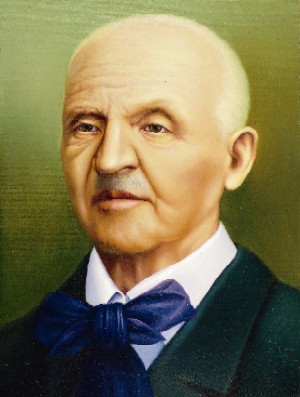
From a musical point of view, all the elements of Bruckner's
language - contrapunctal texture on one hand, and lyricism and colour on
the other one - come together, and all contribute to an overall effect. In
this program I will endeavour to highlight how different conductors deal
with the challenges of this complex and monumental work.
(jn/bs)
|
| Sun | Apr | 27 | 2:00 | Verdi: Requiem
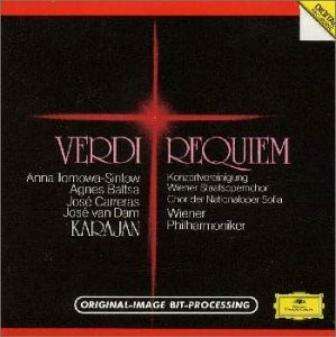
Please join me in an afternoon blitz of Verdi's Requiem with blazing fanfare and soaring chorus to inaugurate spring. As usual, I'll showcase and compare a handful of recordings, some obscure, some famous, and some soul-searching. I'll also briefly venture into two other composers' requiems (you have to come to find out who). Don't worry, this will not be a bang bang stereo session. However, I'll exploit Toshi's exquisite system for the ultimate emotional listening experience. Let's put the long cold winter to rest with heart warming music and a couple of glasses of wine after. No surprise. But no disappointment neither. Look forward to seeing you.
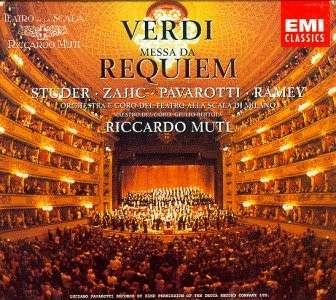
(mf/ta)
|
| Sun | May | 25 | 2:00 | Wagner: Walküre Act 1
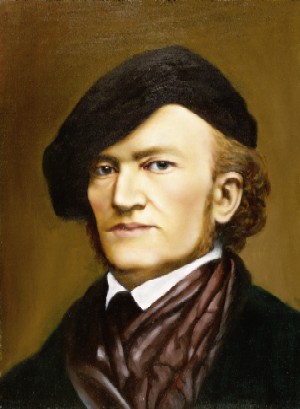

Of the four operas which make up Richard Wagner’s epic
cycle Der Ring des Nibelungen, by all accounts the
most popular is the second – Die Walküre.
Surprisingly, the opera’s first act stands on its own
too, appearing often on recordings and in the concert
hall. It’s almost a self-contained “mini-opera”
containing the following ingredients:
-
three desperate people trapped by inescapable
destiny: an heroic outcast fleeing from adversity, a
beautiful but tragic heroine trapped in a loveless
marriage and yearning for escape, and a domineering,
brutal villain who is discovered to be the mortal
enemy of the hero;
-
the thrilling discovery by two soul-mates who
declare their mutual love against all odds only to
discover that they are also long-lost twin brother and
sister;
-
a sensuous and gripping musical accompaniment
that is one of the most luxurious scores composed in
the late-Romantic period.
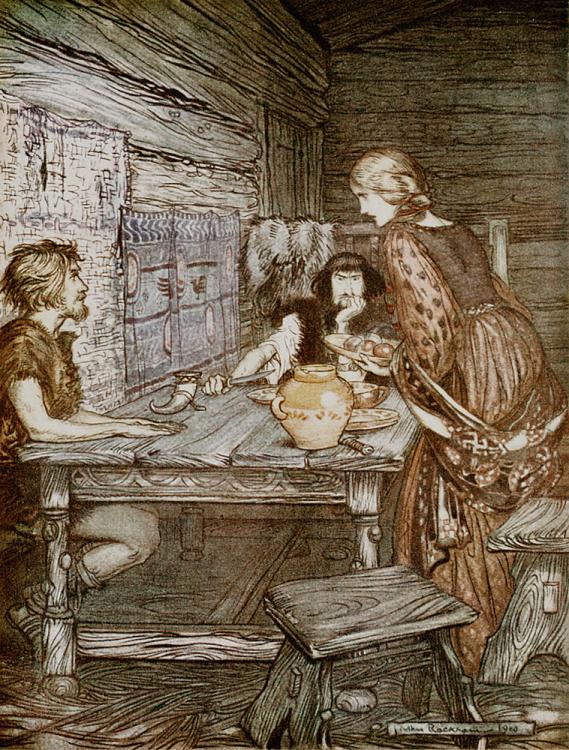
As Wagner’s libretto says: “United are spring and
love!” Come celebrate this union of romance and the
season of romance with a selection of recordings and
video, both historical and recent.
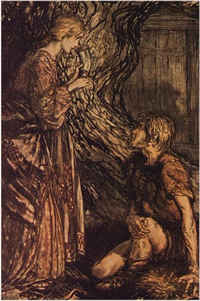
(js/ta)
|
| Sat | June | 21 | 7:00 | Music for string quartet and guitar
Summer of Chamber Music, Part I.
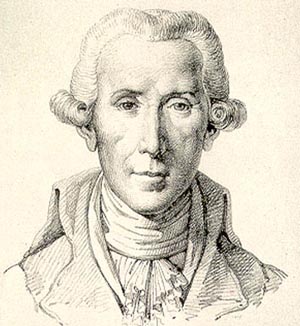
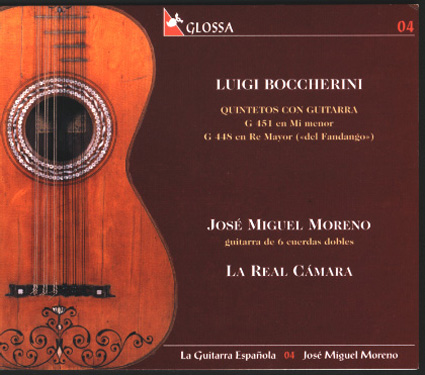
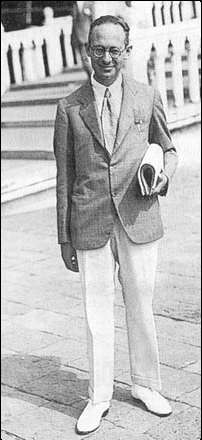
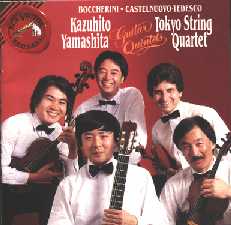
|
As if the first morning sunbeam shines through your window, the sound of strings dazzles your sight. In the modernistic melody and springy rhythm, you hear not only the four usual players of a quartet, but also the additional guitarist who spices up the whole scene. With the hint of a Latin quality the piece proceeds to the night's melancholy and the dancing funfair.
Mario Castelnuovo-Tedesco's Guitar Quintet (1950) was a creation inspired by a series of Guitar Quintets by Luigi Boccherini (1743 - 1805). The Italian-born Jewish composer expressed his delight in and respect for his ancestral colleague of over 250 years before through this quintet as well as a guitar sonata called Homage to Boccherini (1934). Both composers were from Tuscany and had active careers widely beyond the borders of Italy. Boccherini resided for over thirty years in Madrid and died there, whereas Castelnuovo-Tedesco, who worked in the American movie industry, died in Beverly Hills in 1968.[Biography of Tedesco]
The unusual combination of a guitar plus string quartet provides a unique sound world. Where a string quartet is formed of four bowed string instruments in different sizes, a guitar has six strings to be plucked. A guitar can sometimes give a percussion effect, or it can bring sparkle to the ornamental passages, or it can create tidal waves of harmony.
Is the passion shared between these two composers coming from the form and choice of instruments? Or from their nostalgia as exiled souls... The CMC program unites two and a half centuries and explores recordings with both period and modern instruments.
Hope a chord in your heart would be plucked on this beautiful summer evening.
[Discography]
|
(ta/ta)
|
| Sat | July | 5 | 7:00 | Khachaturian Centenary: Spartacus (on video)
Ballet Version of Gladiator
 Imagine a ballet version of Gladiator by Aussie dancers! Twenty fighters are training their bodies in minimum, tight costumes, surrounded by cute soldiers. The fabulous leg lines of Crassus, the Roman commander, in traditional white tights should not be missed. This Australian Ballet production of Spartacus is filled with all sorts of delight for us. Khachaturian's anniversary will be celebrated in our own way!
Imagine a ballet version of Gladiator by Aussie dancers! Twenty fighters are training their bodies in minimum, tight costumes, surrounded by cute soldiers. The fabulous leg lines of Crassus, the Roman commander, in traditional white tights should not be missed. This Australian Ballet production of Spartacus is filled with all sorts of delight for us. Khachaturian's anniversary will be celebrated in our own way!
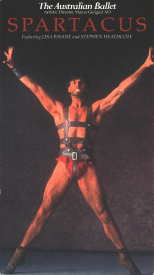 Aside from the visual aspect, the music is quite sensuous and expressive, and does not betray its reputation as "the most successful Romantic ballet after Romeo & Juliet (by Prokovief)." While the emotional waves carry you away to passionate dreams, the barbaric rhythm shakes every single part of you.
Aside from the visual aspect, the music is quite sensuous and expressive, and does not betray its reputation as "the most successful Romantic ballet after Romeo & Juliet (by Prokovief)." While the emotional waves carry you away to passionate dreams, the barbaric rhythm shakes every single part of you.
Entering the 21st century we have the ears to re-evaluate the creative energy of Khachaturian, who was once considered, even cynically, a state composer of the Soviet regime. He shows himself as both a modernist and the last successor of the St. Petersburg school. Complexity and contrast make him so vital and extraordinary.
Aram Ilyich Khachaturian (1903-1978)
- Armenian composer
- Born in Tbilisi (Tiflis) on June 6th, 1903
- Died in Moscow on May 1st, 1978
- Ballet Spartacus, premiered in Leningrad on December 27th, 1956,
revised in 1968
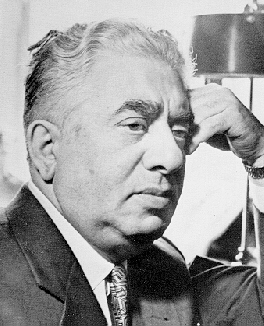 Planned to be a biologist, but at the age of 19 became a cello student, later joining composition class. His Trio (1932) attracted the attention of Prokofiev, who arranged a performance in Paris. His 1st Symphony (1934) was a success at its premiere in April, 1935, but was surpassed by his Piano Concerto (1936). Held various state positions. His 2nd Symphony and Cello Concerto incurred official disapproval in 1948 and he switched to composition of film music. In 1950 he began to teach at Gnesin Institute and Moscow Conservatory. As the conductor of his own works he traveled to Italy, England, Latin America, and elsewhere. In 1956 his ballet Spartacus was acclaimed by Moscow critics as a masterpiece.
Planned to be a biologist, but at the age of 19 became a cello student, later joining composition class. His Trio (1932) attracted the attention of Prokofiev, who arranged a performance in Paris. His 1st Symphony (1934) was a success at its premiere in April, 1935, but was surpassed by his Piano Concerto (1936). Held various state positions. His 2nd Symphony and Cello Concerto incurred official disapproval in 1948 and he switched to composition of film music. In 1950 he began to teach at Gnesin Institute and Moscow Conservatory. As the conductor of his own works he traveled to Italy, England, Latin America, and elsewhere. In 1956 his ballet Spartacus was acclaimed by Moscow critics as a masterpiece.
[Discography]
(ta/ta)
|
| Sat | July | 19 | 7:00 | Music for Baroque Chamber Orchestra.
Summer of Chamber Music, Part II

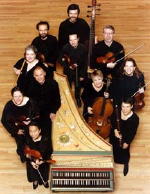
Enjoy a selection of chamber orchestra music by European composers of the Baroque period. The presented items will be compiled from an extensive list of English, French, Italian, German, and Dutch composers, some well known and some worthy of discovery. This special program will provide a delightful complement to the Club's Summer of Chamber Music series. [Discography]
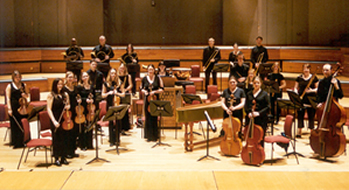
(ge/ta)
|
| Sat | Aug | 2 | 7:00 | Richard Strauss
Summer of Chamber Music, Part III
Richard Strauss (June 11, 1864 - September 8, 1949) gives us an impression of himself as a man with gigantic hands or as some kind of dinosaur, because of his massive tone poems and never-ending dream-like operas. His melodies grew beyond bar lines, his masterful orchestration technique achieved the most elaborate, complicated web of sounds ever written.

But, on his list of compositions there are gems not to be missed in the field of chamber music as well. If you encounter the sprint of passionate energy of the opening passages from his Cello Sonata (composed in 1882-83) or Violin Sonata (1887-88), you can be transported to a different state of mind instantly. But it happens rather forcefully; he was still very young, still in his teens. So radiant that you feel like squinting a bit or even becoming embarrassed. Almost all his chamber music was created in his youth, before he turned twenty-five. You do not have to compromise, but we recommend that you be tolerant of his youth.
Life must have been still fully positive for him, and there was no place for cynicism. Will his reflection of total optimism to life bother you? Or will it make you have a wry smile? If you are old enough, nostalgia is inevitable. Everybody was young once...
Our program will demonstrate the richness and the heights that this young man reached through his genius.
(mf/ta)
|
| Sat | Aug | 16 | 7:00 | Les Nuits d'été
Berlioz Anniversary Series
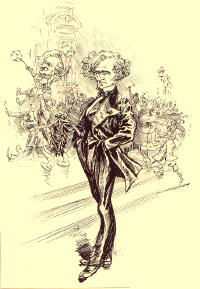 The song cycle “Les nuits d'été” is not only Berlioz’s most popular work after “Symphonie fantastique”, but it is also one of the great masterpieces of the art of song in general, and that of orchestral song in particular. Based on poems by Théophile Gautier, one of the greatest French romantic poets, and a good friend of Berlioz, it is also a work which, perhaps even more than “Symphonie fantastique”, characterizes Berlioz’s style and genius, and even more generally, the French romantic art. The subject is, of course, love.
The song cycle “Les nuits d'été” is not only Berlioz’s most popular work after “Symphonie fantastique”, but it is also one of the great masterpieces of the art of song in general, and that of orchestral song in particular. Based on poems by Théophile Gautier, one of the greatest French romantic poets, and a good friend of Berlioz, it is also a work which, perhaps even more than “Symphonie fantastique”, characterizes Berlioz’s style and genius, and even more generally, the French romantic art. The subject is, of course, love.
The six songs, two light, and four sultry, are resplendent with the characteristic imagery of the French lyric of the 1830s: young lovers picking wild strawberries in spring, the aroma of a faded rose blossom, a grey tomb in the shadow of a yew tree, distance from a rose-colored smile. The final barcarole, alluding to far-off places is one of the best of Berlioz's many armchair voyages. Finally, it is a masterpiece of orchestration, where the voice, while still leading, is perfectly integrated in the delicately coloured orchestral texture.
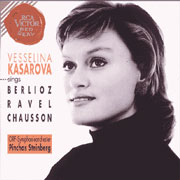 |
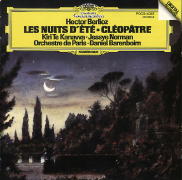 |
(jn/jn)
|
|
 Presentation of DVD recording of Claude Debussy's work, premiered on April 30, 1902 at the Opéra-Comique, Paris France.
Presentation of DVD recording of Claude Debussy's work, premiered on April 30, 1902 at the Opéra-Comique, Paris France.
 [Nutcracker DVD - additional information]
[Nutcracker DVD - additional information]






























 Imagine a ballet version of Gladiator by Aussie dancers! Twenty fighters are training their bodies in minimum, tight costumes, surrounded by cute soldiers. The fabulous leg lines of Crassus, the Roman commander, in traditional white tights should not be missed. This Australian Ballet production of Spartacus is filled with all sorts of delight for us. Khachaturian's anniversary will be celebrated in our own way!
Imagine a ballet version of Gladiator by Aussie dancers! Twenty fighters are training their bodies in minimum, tight costumes, surrounded by cute soldiers. The fabulous leg lines of Crassus, the Roman commander, in traditional white tights should not be missed. This Australian Ballet production of Spartacus is filled with all sorts of delight for us. Khachaturian's anniversary will be celebrated in our own way!
 Aside from the visual aspect, the music is quite sensuous and expressive, and does not betray its reputation as "the most successful Romantic ballet after Romeo & Juliet (by Prokovief)." While the emotional waves carry you away to passionate dreams, the barbaric rhythm shakes every single part of you.
Aside from the visual aspect, the music is quite sensuous and expressive, and does not betray its reputation as "the most successful Romantic ballet after Romeo & Juliet (by Prokovief)." While the emotional waves carry you away to passionate dreams, the barbaric rhythm shakes every single part of you.
 Planned to be a biologist, but at the age of 19 became a cello student, later joining composition class. His Trio (1932) attracted the attention of Prokofiev, who arranged a performance in Paris. His 1st Symphony (1934) was a success at its premiere in April, 1935, but was surpassed by his Piano Concerto (1936). Held various state positions. His 2nd Symphony and Cello Concerto incurred official disapproval in 1948 and he switched to composition of film music. In 1950 he began to teach at Gnesin Institute and Moscow Conservatory. As the conductor of his own works he traveled to Italy, England, Latin America, and elsewhere. In 1956 his ballet Spartacus was acclaimed by Moscow critics as a masterpiece.
Planned to be a biologist, but at the age of 19 became a cello student, later joining composition class. His Trio (1932) attracted the attention of Prokofiev, who arranged a performance in Paris. His 1st Symphony (1934) was a success at its premiere in April, 1935, but was surpassed by his Piano Concerto (1936). Held various state positions. His 2nd Symphony and Cello Concerto incurred official disapproval in 1948 and he switched to composition of film music. In 1950 he began to teach at Gnesin Institute and Moscow Conservatory. As the conductor of his own works he traveled to Italy, England, Latin America, and elsewhere. In 1956 his ballet Spartacus was acclaimed by Moscow critics as a masterpiece. 


 The song cycle “Les nuits d'été” is not only Berlioz’s most popular work after “Symphonie fantastique”, but it is also one of the great masterpieces of the art of song in general, and that of orchestral song in particular. Based on poems by Théophile Gautier, one of the greatest French romantic poets, and a good friend of Berlioz, it is also a work which, perhaps even more than “Symphonie fantastique”, characterizes Berlioz’s style and genius, and even more generally, the French romantic art. The subject is, of course, love.
The song cycle “Les nuits d'été” is not only Berlioz’s most popular work after “Symphonie fantastique”, but it is also one of the great masterpieces of the art of song in general, and that of orchestral song in particular. Based on poems by Théophile Gautier, one of the greatest French romantic poets, and a good friend of Berlioz, it is also a work which, perhaps even more than “Symphonie fantastique”, characterizes Berlioz’s style and genius, and even more generally, the French romantic art. The subject is, of course, love.
